Taipei Times: Rumor has it that the Taipei Financial Center (台北金融大樓), as part of its public relations overhaul, is planning to change its name to Taipei 101?
Terry Shen (
TT: Not counting the height of the mast, where will Taipei 101 stand in comparison with the world's tallest buildings?
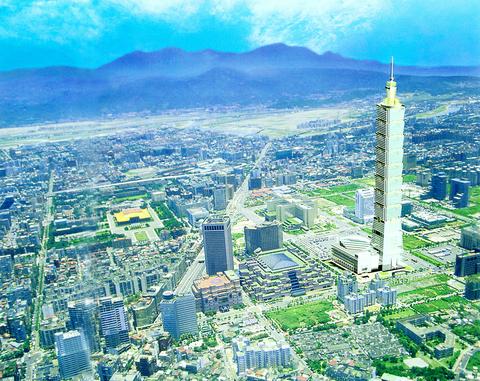
PHOTO: TAIPEI FINANCIAL CENTER
Shen: At 508m of inhabitable floor area, we may come in as the world's tallest. But we get our actual ranking from the Tower 100 Council. They are a US organization that determines the rankings of the world's 100 tallest structures.
TT: Who are the biggest shareholders in the project and which of these are major anchor tenants in the tower?
Shen: The biggest single shareholder is China United Trust & Investment Corp (
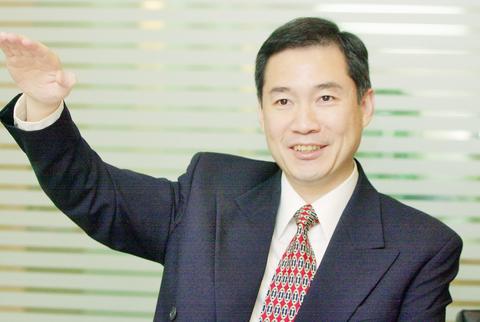
PHOTO: CHIANG YING-YING, TAIPEI TIMES
Actually, we think some of the best space should be reserved for foreign tenants, such as investment banks, securities houses or accounting firms. We hope the building will have an international make-up of companies, not just local firms -- that's not our target, because it will be an international financial center.
TT: What kind of interest have foreign businesses shown in making Taipei 101 their home?
Shen: Usually, before making a big investment in a major real-estate project, clients won't make their intentions known. But based on discussions with the top real-estate agents, like Jones Lang LaSalle or Colliers Jardine, they say that almost all foreign players -- say for example securities houses -- have long set their current rental contracts with landlords to terminate close to the scheduled 2004 completion date of Taipei 101. So their intentions are clear. But I think that the last six months prior to completion will be the most crucial time for them to decide whether to move in or not.
TT: That 2004 completion date is already two years behind schedule. What were the biggest delays in the project and what makes you believe you can keep on track for 2004?
Shen: The podium tower, which is basically the shopping center complex that forms the first few ground levels of the complex that surrounds the main tower, underwent several design changes, which pushed back the schedule of the retail area. Of course, the March 31 earthquake also delayed the whole opening schedule. In addition, about two-and-a-half years ago we had a problem with the height, in relation to Sungshan Airport's flight patterns. At the time the question was whether the structure should be lowered to 90 floors and we had to do an extensive review of any structural design changes that may have been necessary. This also delayed the project.
TT: This issue was later resolved when the airport upgraded its landing navigation system and adopted a new flight pattern away from your building. Did your organization put pressure on or try to influence the Aviation Safety Council (ASC) to make those changes?
Shen: No, that's impossible. Actually, the Central Government requested that the airport alter their flight pattern and circle within 3km of the airport, rather than fly over the central city. The goal was to reduce noise over the city that could impact city development -- and also to reduce the danger [of planes falling out of the sky and onto the city]. So, when we applied for the building license the [ASC] authorities said we are not within the restricted area. But they didn't really take into consideration the landing and take-off process. But when we applied for the red aviation warning light that goes on top of all tall structures, the Council suddenly [woke up] and realized, "Oh, such a tall building" and then proceeded to make the problem known to the public. Later, the Control Yuan investigated and found the project was approved by the ASC but [the implications were] not fully thought out. So they did end up altering the flight path away from the city and we went back to the original 101-floor plan.
TT: What is the total cost of the Taipei 101 project and what additional costs were incurred from the earthquake?
Shen: The total cost of the project is NT$56 billion. We have collected NT$17 billion and we need to collect another NT$4.2 billion by the end of this year [to keep on schedule]. But the earthquake created another NT$800 million [in additional costs], so totally, by the end of this year we are looking to raise NT$5 billion.
TT: What is the level of foreign participation in the project and in what specific areas?
Shen: From the start of the project we used Chinese designers to add an oriental look to the structure. But for the technical side we cannot rely on Taiwanese skills because we have no experience building a massive skyscraper.
For structural engineering we used what is probably the world's most renowned structural designer, Thorton-Tomasetti from New York. Because we want the material technology of this building to be of an international standard.
In almost every aspect we consulted with foreign firms -- from the fire-fighting system, to air-conditioning to lighting and plumbing. Most of them are from New York, as that city has extensive experience in high-rise buildings. As for who has the experience to manage these types of sites, we chose New York's Turner International for project management. But keep in mind this is an island that [unlike New York] has typhoons and earthquakes. So we chose Japan's Kumagai Gumi to do the general project management. This is a firm with international experience and a strong understanding of earthquake zones and of managing major construction projects in a very crowded city. Obviously, also very important is the steel-structure contractor, which is a joint-venture between Japan's Nippon Steel and Taiwan's China Steel Corp (
As for elevators, we found Toshiba has some of the fastest, safest elevators. In this building, and the selection of all the participants, safety has been the number-one priority.
TT: With other regional office towers, like the Petronas Towers in Malaysia, only half-occupied and the office-rental market sagging, what strategy do you have to fill Taipei 101 with tenants?
Shen: In Taipei, Tokyo or New York for example, building a high-rise tower makes much more sense [and is easier to fill with tenants] because land costs are very high in comparison with Malaysia. If you look at the offices in Taipei with the most vacancies, they are the buildings that are 10-20 stories high. The better occupancy rates are in places like the Far East Building (
TT: Two-and-a-half months have passed since the March 31 quake that tragically took the lives of five people and caused hundreds of millions of Taiwan dollars in damage. Currently several investigations into the accident are nearing completion and you have already been given the go-ahead to resume construction on most of the lower floors. Which reports are complete and which still needs to be completed?
Shen: At the time of the quake construction was up to the 34th floor. The only actual damage was on some of the frame structure on the 34th floor, nothing below that. We have received approval to resume construction on floors below the 24th-floor level. We are currently awaiting approval to resume construction on the levels above that, pending a review by National Taiwan University of an already completed report on how to strengthen the replacement tower crane so that no similar incidents occur. Secondly, the actual cause of the cranes' collapse is being reviewed: whether it was the result of [unforeseeable] earthquake stress or, say for example, the result of human error. That report, from the Taipei Structural Engineers Association, should come out this week. The third review was on the structural safety of the building. While those tests have been completed and there are no structural problems, they still need to complete the written report.
Let me clarify that the collapse of the cranes was beyond our [wildest] imagination. Prior to that we had a totally accident-free workplace.
TT: One of the main hurdles you now face is to restore public confidence in the project. How do you plan to surmount that challenge?
Shen: The company policy has always been built on total transparency. The PR question now is, how do we transfer the technical design criteria we have used and the high safety standards of this building -- how do we transfer that information in a clear, easy-to-understand format to the public. So we have brought in Ogilvy PR to communicate that message to the public. In reality, the public does not fully understand high-rise building construction, so we have to [perfect] the transfer of that information to them.
TT: Taipei residents have experienced several major quakes in the last few years and therefore many are concerned about the fault line located near the Taipei 101 site, better known as the Taipei Fault. What kind of information can you offer to alleviate the public's fears that this fault line is too close to Taipei 101?
Shen: About 10 years ago, when the Department of Rapid Transit Systems [under the Taipei City Government] was planning the Hsinyi Line of the Mass Rapid Transit system, they did extensive research on the Taipei Fault. They found it has not been active for about 10,000 years and is far from our site -- about 200m. The Taipei Financial Center did further detailed research [into the issue] after we were awarded this BOT (build-operate-transfer) project. We invited local and foreign experts and professors to study the issue and found it has not been active for at least 45,000 years. This is also [the conclusion of] the Central Geological Survey of the Ministry of Economic Affairs, [whom have] taken the Taipei Fault off the official list of active faults.
[Regardless of the fact that] the Taipei Fault is categorized as non-active, the Taipei Financial Center has [extensively] reinforced the foundation. There are 557 piles [anchoring pillars] under the building. The length of each pile is about 75-80m long and is driven another 25-30m, into the bedrock below. The seismic design of Taipei 101 can handle an earthquake of more than magnitude 7 [on the Richter scale] and still be stable. Also keep in mind that the March 31 quake that took down the cranes was, according to the Central Weather Bureau, centered under the sea, south of Hualien. There is no relationship between the March 31 earthquake and the Taipei Fault. Foreign experts have told us that, with the earthquake-proofing we have planned, if an earthquake was to occur so severe as to topple the building, there would also be no other structures left standing in Taipei.
TT: As with many tall buildings around the globe, Taipei 101 also has an 800-ton damper ball to counter wind and potential quake sway -- how does that device work?
Shen: In Taiwan we face two significant natural conditions, typhoons and earthquakes. For high-rise structures the impact of typhoons is even greater than that of earthquakes. In strong winds, tall buildings will bend and move.
The ball acts as a wind damper, countering the sway of the building to reduce movement. The gold-colored ball will be on display in the building and will be a confidence-builder for all who see this amazing object, designed by Canadian wind-tunnel consultants Rowan, Williams, Davies and Irwin.

Shares in Taiwan closed at a new high yesterday, the first trading day of the new year, as contract chipmaker Taiwan Semiconductor Manufacturing Co (TSMC, 台積電) continued to break records amid an artificial intelligence (AI) boom, dealers said. The TAIEX closed up 386.21 points, or 1.33 percent, at 29,349.81, with turnover totaling NT$648.844 billion (US$20.65 billion). “Judging from a stronger Taiwan dollar against the US dollar, I think foreign institutional investors returned from the holidays and brought funds into the local market,” Concord Securities Co (康和證券) analyst Kerry Huang (黃志祺) said. “Foreign investors just rebuilt their positions with TSMC as their top target,
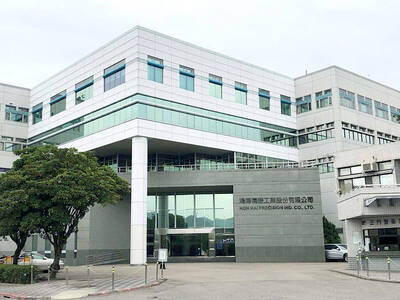
REVENUE PERFORMANCE: Cloud and network products, and electronic components saw strong increases, while smart consumer electronics and computing products fell Hon Hai Precision Industry Co (鴻海精密) yesterday posted 26.51 percent quarterly growth in revenue for last quarter to NT$2.6 trillion (US$82.44 billion), the strongest on record for the period and above expectations, but the company forecast a slight revenue dip this quarter due to seasonal factors. On an annual basis, revenue last quarter grew 22.07 percent, the company said. Analysts on average estimated about NT$2.4 trillion increase. Hon Hai, which assembles servers for Nvidia Corp and iPhones for Apple Inc, is expanding its capacity in the US, adding artificial intelligence (AI) server production in Wisconsin and Texas, where it operates established campuses. This
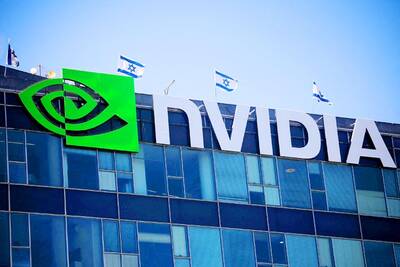
H200 CHIPS: A source said that Nvidia has asked the Taiwanese company to begin production of additional chips and work is expected to start in the second quarter Nvidia Corp is scrambling to meet demand for its H200 artificial intelligence (AI) chips from Chinese technology companies and has approached contract manufacturer Taiwan Semiconductor Manufacturing Co (TSMC, 台積電) to ramp up production, sources said. Chinese technology companies have placed orders for more than 2 million H200 chips for this year, while Nvidia holds just 700,000 units in stock, two of the people said. The exact additional volume Nvidia intends to order from TSMC remains unclear, they said. A third source said that Nvidia has asked TSMC to begin production of the additional chips and work is expected to start in the second
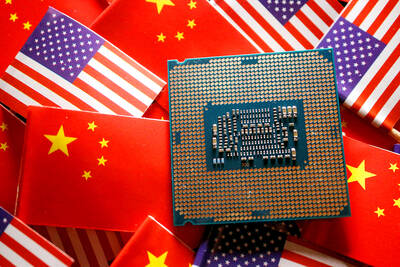
US President Donald Trump on Friday blocked US photonics firm HieFo Corp’s US$3 million acquisition of assets in New Jersey-based aerospace and defense specialist Emcore Corp, citing national security and China-related concerns. In an order released by the White House, Trump said HieFo was “controlled by a citizen of the People’s Republic of China” and that its 2024 acquisition of Emcore’s businesses led the US president to believe that it might “take action that threatens to impair the national security of the United States.” The order did not name the person or detail Trump’s concerns. “The Transaction is hereby prohibited,”